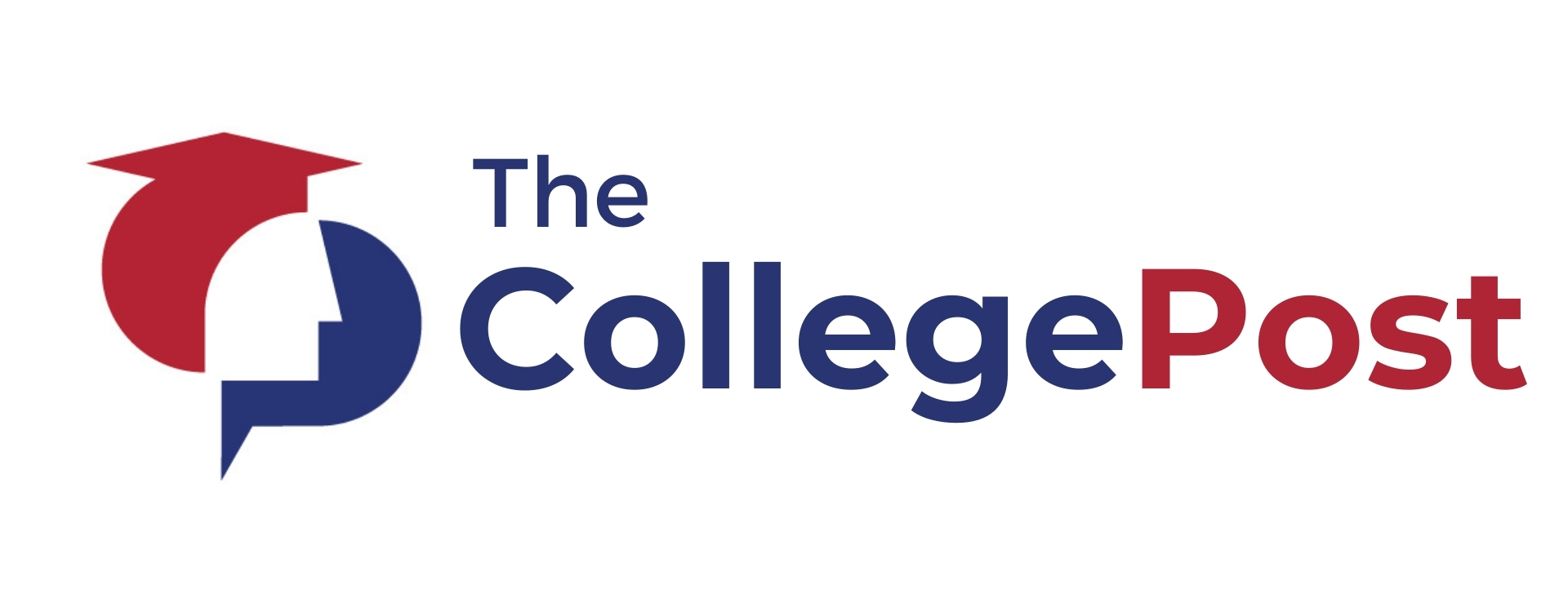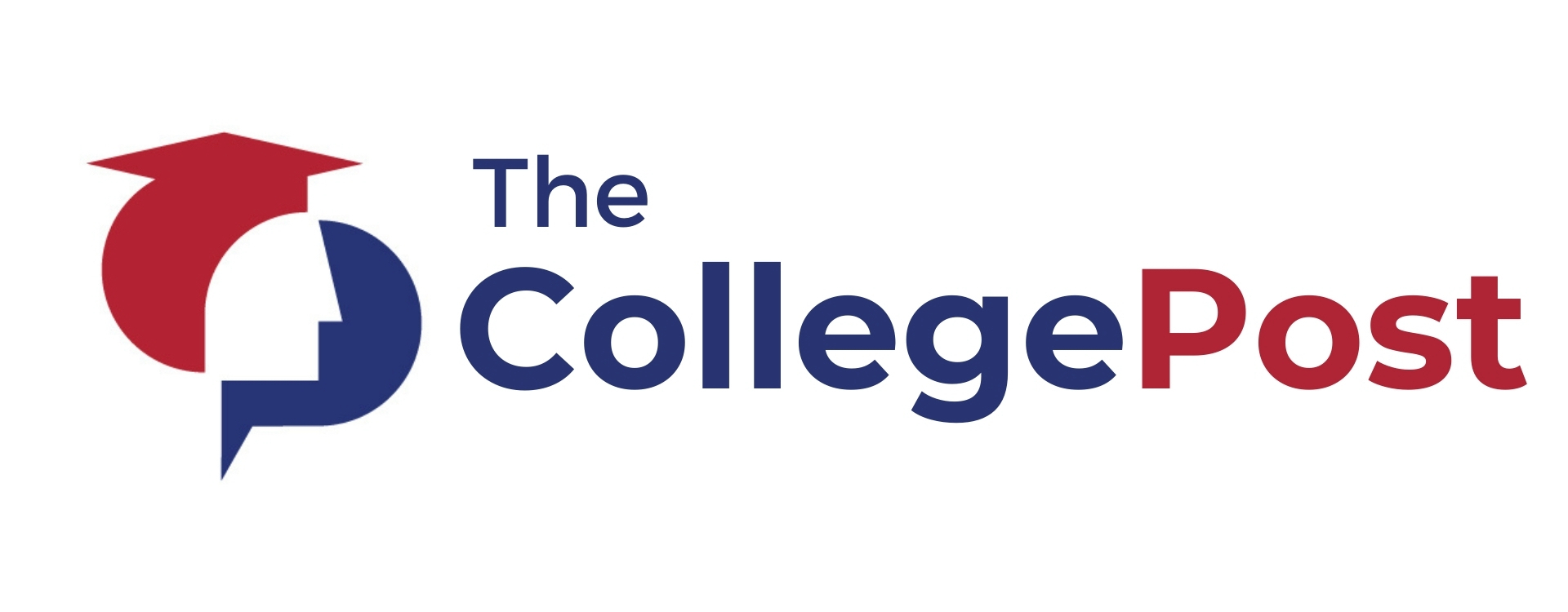If you’re on your way to a college degree, money may well be among your biggest worries. The thought of having to take out massive student loans just to pay for college can be overwhelming. That’s where tuition-free colleges come in!
Imagine graduating without having to worry too much about your finances because your tuition-free college already saved you thousands of dollars. On top of that, there are more schools to choose from than most people think, including prestigious institutions with high world rankings.
Does free tuition sound like it could be for you? Here are 23 tuition-free colleges in the US where you can earn four-year degrees!

What Does Tuition-Free College Mean?
There are a few ways to enjoy the perks of tuition-free programs. Students may be able to:
- demonstrate significant financial need,
- work to earn tuition,
- or (in some cases), choose to attend a school in-state.
It’s important to understand that tuition only refers to the price that an institution charges for courses or credits. This doesn’t include other expenses such as student fees, meal plans, and medical insurance.
But how can a college afford to give away education? Often, colleges are able to cover the cost through endowments (funds from organizational or individual donors), federal aid, and generous alumni donations. Students can cover whatever remains after removing tuition costs with additional grants and scholarships.
Ready to explore your options for four-year degrees in any of these tuition-free universities? Take your pick from the below!
Free-Tuition Colleges for Students With Demonstrated Need
Demonstrated need is basically the amount that’s left once you take the entire cost of attending college — which combines direct (tuition, fees, food, and housing) and indirect expenses (travel costs, books, laundry, and entertainment) — and then subtract your expected family contribution.
Determining this number can help schools know how much financial aid you need and fortunately, there are some colleges that are generous enough to cover 100 percent of tuition costs — like these below.
1. Antioch College (Ohio)
At Antioch, admitted students who qualify for Pell Grants are immediately given full-tuition, last-dollar scholarships (scholarships that are applied after other financial aid is awarded) that amount to an average of $30,941 per student.
The college’s admissions process follows a need-blind approach, promising to meet the full demonstrated financial need for all students regardless of income or background.
While students shoulder other expenses, Antioch can lend a hand with housing needs when the FAFSA proves that a student’s family income or estimated contribution won’t be able to handle it.
| 🎉 Acceptance Rate | 81.7 percent |
| ✅ Admission Requirements | |
| 📌 Location | Yellow Springs, Ohio |
2. Barclay College (Kansas)
Full-time students who live on campus at this college are eligible for a scholarship that covers the entire cost of tuition, cutting the total cost of attendance by more than half. This way, students only need to work to pay off room, board, general fees, and living expenses.
There are also other internal scholarships (even for those staying off-campus) and federal grants that can help shoulder these costs.
| 🎉 Acceptance Rate | 67 percent |
| ✅ Admission Requirements | |
| 📌 Location | Haviland, Kansas |
3. Berea College (Kentucky)
Since 1892, Berea has made tuition free to its students through its Tuition Promise Scholarship, which adopts a funding model that mainly depends on endowments and a federal budget.
The institution’s work program is also well-known for helping students earn money to cover additional expenses. They need to complete 10 hours of on-campus work per week, which pays anywhere from $5.60 to $8.75 hourly.
| 🎉 Acceptance Rate | 30 percent |
| ✅ Admission Requirements |
|
| 📌 Location | Berea, Kentucky |
4. Curtis Institute of Music (Pennsylvania)
Merit-based, full-tuition scholarships are given to all Curtis students regardless of their financial situation to secure the brightest talents in music. On top of this, students can also apply for other scholarships or loans to offset the costs of other expenses.
The annual value of the scholarship for the 2020-21 academic year was set at $44,898 for undergraduate students and $55,748 for those pursuing a doctorate degree.
| 🎉 Acceptance Rate | 4.44 percent |
| ✅ Admission Requirements |
|
| 📌 Location | Philadelphia, Pennsylvania |
5. Deep Springs College (Nevada)
All students admitted to this Nevada-based college automatically have their tuition and housing taken care of by the school, regardless of financial need or other factors. These scholarships are valued at over $50,000, but students are still expected to pay for their own medical insurance, textbooks, travel and transportation, as well as damage deposits.
For those that still have financial needs, they can consult with the Academic Dean to discuss fundings for other expenses.
| 🎉 Acceptance Rate | 10 percent |
| ✅ Admission Requirements |
|
| 📌 Location | Dyer, Nevada |
6. Duke University (North Carolina)
Duke considers providing need-based aid for all students (US citizens, permanent residents, and undocumented students) an investment. In 2019 alone, the university released $169 million to fund grants and scholarship aid to ensure that around 52 percent of students did not pay the full cost of attendance.
How does Duke make this happen? Financial subsidies come in the form of federal loans, work-study programs, and university scholarships. Students must indicate in their application that they will be applying for financial aid and complete necessary forms such as the FAFSA and the CSS Profile.
You can also look into the Robertson Scholars Leadership Program which provides eight semesters of full tuition, room and board, and other mandatory fees for chosen scholars.
| 🎉 Acceptance Rate | 7.6 percent |
| ✅ Admission Requirements |
|
| 📌 Location | Durham, North Carolina |
7. Massachusetts Institute of Technology (Massachusetts)
MIT operates on a need-blind and full-need approach when it comes to cost and affordability. The college usually covers 100 percent of a student’s demonstrated financial need but for those who come from families that earn less than $90,000, tuition costs are shouldered by the school.
| 🎉 Acceptance Rate | 7 percent |
| ✅ Admission Requirements |
|
| 📌 Location | Cambridge, Massachusetts |
8. Stanford University (California)
Stanford has long been dedicated to giving brilliant students the opportunity to attend their school, regardless of financial capabilities. Its financial aid program is need-based, meaning that your family’s income and financial status determines your aid eligibility.
The Ivy League school promises that students whose parents earn below $75,000 a year can get a full-ride scholarship. If your family has less than $150,000 in annual income, Stanford assures you that your tuition charges will be covered by your need-based scholarship.
| 🎉 Acceptance Rate | 4.3 percent |
| ✅ Admission Requirements |
|
| 📌 Location | Stanford, California |
Colleges Where You Can Work for Your Tuition
Some schools allow you to work in exchange for income that can help you offset your attendance costs. These colleges all have different rules and eligibility, but they all have the same benefit: free tuition!
9. Alice Lloyd College (Kentucky)
This Kentucky college offers the Appalachian Leaders College Scholarship to students who reside within the 108 counties in Central Appalachia. The scholarship covers tuition for up to 10 semesters.
To be eligible, students are required to participate in the Student Work Program. Full-time students must log a minimum of 10 hours per week (or 160 hours per semester) for either on- or off-campus employment.
There are 14 departments to choose from including building maintenance, kitchen support, admissions, and academic administration. Other costs, such as room, board, books, and laboratory fees are shouldered by the student.
| 🎉 Acceptance Rate | 26.6 percent |
| ✅ Admission Requirements |
|
| 📌 Location | Pippa Passes, Kentucky |
10. College of the Ozarks (Missouri)
The College of the Ozarks in Missouri combines a work-study program with the College of the Ozarks scholarship and federal or state grants awarded to the student to offer free tuition.
Under the on-campus work agreement, students need to work 15 hours per week (except for two weeks where they have to log 40 hours a week) for the entire academic year.
Books, room, and board are not covered but students are free to apply for additional scholarships to take care of these expenses. All students are also required to shell out an acceptance fee of $330, a health and technology service fee of $230, and a security deposit for their residence hall.
| 🎉 Acceptance Rate | 10 percent |
| ✅ Admission Requirements |
|
| 📌 Location | Point Lookout, Missouri |
11. Sterling College (Vermont)
An interest in farming or livestock management can help you get into a tuition-free program from Sterling College through the Wendell Berry Farming Program. Under this initiative, qualified students can expect to have a tuition-free junior and senior year farming curriculum.
This means that the program is only available for students who complete at least 60 college credits (whether at Sterling or any other institution) and express an interest in farming as a livelihood. There are only 12 students selected for a two-year commitment and those eligible for the Pell Grant or who come from groups underrepresented in farming have an advantage.
If this isn’t what you had in mind, Sterling also offers a work program that pays a minimum of $1,650 a year (which is deducted to your overhead college costs) for at least 80 hours each semester. You can find a job on the farm, in dormitories or kitchens, in administrative offices, or even at the local public schools.
| 🎉 Acceptance Rate | 86 percent |
| ✅ Admission Requirements |
|
| Location | Craftsbury Common, Vermont |
12. US Air Force Academy (Colorado)
Similar to other military service academies, the US Air Force Academy is willing to invest in students’ educations in return for their commitment after graduation.
Every cadet will receive cost-free tuition, room and board, medical care (outpatient treatments and dental examinations), and access to a low cost, government-sponsored insurance program.
But apart from usual academic requirements, cadets have certain obligations. They must sign an agreement that states they will complete the course of instruction and accept an appointment and serve as an officer in the US Air Force for at least eight years after graduation.
| 🎉 Acceptance Rate | 11.4 percent |
| ✅ Admission Requirements |
|
| 📌 Location | Colorado Springs, Colorado |
13. US Coast Guard Academy (Connecticut)
Accepted cadets at the US Coast Guard Academy are promised free tuition, currently valued at more than $280,000, while room and board are also covered. In addition, student debt is no concern because all students are given a salary while attending the academy which totals about $12,000 per year.
There is a five-year service commitment after graduation but 85 percent of graduates reportedly choose to serve longer. However, like similar military institutions, admissions are merit-based and it’s extremely competitive.
| 🎉 Acceptance Rate | 14.2 percent |
| ✅ Admission Requirements |
|
| 📌 Location | New London, Connecticut |
14. US Merchant Marine Academy (New York)
Tuition, uniforms, textbooks, and room and board come at no cost for admitted students at this federal academy. USMMA graduates are then obligated to serve in any of the school’s approved occupations for at least six years.
However, there are certain fees that midshipmen should cover, such as midshipman fees, computer package fees, transportation costs for leave and liberty periods, personal services, and health insurance.
| 🎉 Acceptance Rate | 22.2 percent |
| ✅ Admission Requirements |
|
| 📌 Location | Kings Point, New York |
15. US Military Academy (New York)
The West Point-based US Military Academy academy offers “a fully funded, prestigious four-year academic, physical, and mental education” that takes care of tuition, accommodation, and health insurance. Qualified cadets can also expect a monthly stipend that can help with other necessary expenses.
Students are required to serve a minimum of eight years upon graduating which combines both active duty and reserve component service.
| 🎉 Acceptance Rate | 10.3 percent |
| ✅ Admission Requirements |
|
| 📌 Location | West Point, New York |
16. US Naval Academy (Maryland)
US Naval Academy midshipmen automatically gain a full-ride scholarship which includes medical and dental care costs. The promise of a funded education also comes with a monthly stipend amounting to $1,087 to cover the cost of laundry, grooming, and other school fees.
In exchange for these benefits, midshipmen must serve five years of active duty after graduation.
| 🎉 Acceptance Rate | 8.5 percent |
| ✅ Admission Requirements |
|
| 📌 Location | Annapolis, Maryland |
17. Vanderbilt University (Tennessee)
Through Vanderbilt’s Ingram Scholars Program, students who demonstrate a desire to create valuable social impact through community service may enjoy full-tuition support, along with a $5,000 stipend.
In return, scholars should commit around 20 hours each month during the academic year, and a minimum of one summer devoted to any relevant community outreach and service projects. You can also investigate additional financial aid packages if your demonstrated need goes beyond the tuition cost.
The scholarship can be renewed annually but maintaining a 3.0 GPA and completing other service-related requirements will be deciding factors.
| 🎉 Acceptance Rate | 9.1 percent |
| ✅ Admission Requirements |
|
| 📌 Location | Nashville, Tennessee |
Tuition-Free Colleges for Locals
Apart from low-income families, free tuition in federally-funded colleges is often awarded to in-state residents. Among the reasons for such initiatives is the desire of state officials to increase their workforce quality and to provide locals with opportunities for a better life through a college education.
18. Arizona State University (Arizona)
In-state high school graduates are eligible to apply to the ASU College Attainment Grant Program, possibly earning eight consecutive full-time semesters without having to pay tuition and fees.
Other than residency requirements, students must also be qualified for the Pell Grant and enroll in ASU right after their high school graduation.
Renewal of the grant depends on maintaining at least a 2.5 cumulative grade point average, completing a minimum of 24 ASU credit hours for each academic year, and a few other conditions.
| 🎉 Acceptance Rate | 86 percent |
| ✅ Admission Requirements |
|
| 📌 Location | Tempe, Arizona |
19. City College of San Francisco (California)
San Francisco residents have much to gain from CCSF’s tuition-free program. All you have to do is complete the Free City application and give proof that you have lived within the state for a minimum of one year and one day.
To fully cover other necessary expenses, such as health and student activity fees, you can file for additional federal aid or a state grant (California College Promise Grant).
| 🎉 Acceptance Rate | 100 percent |
| ✅ Admission Requirements |
|
| 📌 Location | San Francisco, California |
20. Haskell Indian Nations University (Kansas)
Haskell boasts of a fee structure that aims to give Native American and Alaskan Native students from federally recognized tribes tuition-free education. According to its website, Haskell determines that each tribe that sends a student saves about $20,000 in tuition and other fees.
Around 76 Cherokee Nation students enrolled in the fall of 2015 and were able to save a total of $350,000 in that semester, compared to other regional institutions. But students still need to pay around $715 in total institutional costs each year.
The university also recognizes federal financial aid programs such as Pell Grants and work-study arrangements, which can reduce your tuition costs and help you graduate with little to no debt.
| 🎉 Acceptance Rate | 88.2 percent |
| ✅ Admission Requirements |
|
| 📌 Location | Lawrence, Kansas |
21. University System of New Hampshire (New Hampshire)
The Granite Guarantee is a financial aid program where New Hampshire residents who are eligible for a Pell grant can receive free tuition for up to four years at three institutions under the USNH — Keene State College, Plymouth State University, and the University of New Hampshire.
Other requirements include being a first-time, full-time student pursuing a bachelor’s degree. However, if you’re thinking of transferring to another college or university within the USNH, you’ll need to check with your financial aid office to see if the guarantee transfers with you.
| 🎉 Acceptance Rate | 76.8% for UNH, 78.8% for Plymouth State, 82.7% for Keene State |
| ✅ Admission Requirements |
|
| 📌 Location | Durham, New Hampshire (UNH), Keene, New Hampshire (KSC), Plymouth, New Hampshire (PSC) |
22. Warren Wilson College (North Carolina)
This North Carolina-based college offers affordable education for local students through its North Carolina Free Tuition Plan.
Free college tuition is awarded to in-state undergraduate students (full-time and first-time) who qualify for federal or need-based aid. To be eligible, you need to submit your FAFSA along with a North Carolina Residency Determination Service confirmation that confirms you have legally resided in the state for a minimum of one year.
You must also have on-campus accommodations and participate in the Warren Wilson work program, which will require you to work at least 10 hours.
| 🎉 Acceptance Rate | 85 percent |
| ✅ Admission Requirements |
|
| 📌 Location | Swannanoa, North Carolina |
23. Webb Institute (New York)
If you’re a US citizen or a permanent resident of New York, you’re welcome to attend this small engineering school tuition free!
Like most schools on this list, other fees and expenses are shouldered by the student but there’s an easy workaround: apply for additional federal aid or grants.
Webb guarantees that everyone who files a FAFSA will be given consideration to receive a scholarship, but the type of scholarship will depend on your year of study. Plus, you are guaranteed a paid internship in the marine industry for two months every academic year.
| 🎉 Acceptance Rate | 18.3 percent |
| ✅ Admission Requirements |
|
| 📌 Location | Glen Cove, New York |
BONUS: Tuition-Free Trade Schools
Simply put, a trade school (also known as a vocational school) is an institution focused on skill-based learning that can lead to various job opportunities with less student debt.
Degree programs in fields such as nursing, landscape architecture, automotive, and information technology are available in trade schools and program lengths can span from eight months to two years.
However, when you graduate, you’re offered certificates or diplomas that aren’t really the same as college degrees but will be sufficient for a position within an industry that recognizes your certification.
READ MORE: College vs Trade School: Which Choice Is Right for You?
The Apprentice School (Virginia)
Founded more than a century ago, The Apprentice School offers a unique opportunity for students interested in learning more about the shipbuilding industry.
The trade school under Newport News Shipbuilding offers four and five-year tuition-free apprenticeships. Apprentices regularly chip in a 40-hour week and are paid for their work, including time spent in classes, starting at $17.34 per hour in the first term.
The school also offers a wide range of employee benefits, such as paid vacations, health and life insurance, pension plans, and tuition reimbursement.
| 🎉 Acceptance Rate | 6 percent |
| ✅ Admission Requirements |
|
| 📌 Location | Newport News, Virginia |
Williamson College of the Trades (Pennsylvania)
Williamson is on a mission to offer young men associate degrees in trades touching on masonry, power plant technology, and landscaping management.
The school promises that all students will receive full scholarships (combined with Pell Grant and/or other state grants) that eliminate tuition, room, and board from the total cost of attendance. However, student fees, amounting to $140, will be handled by the student.
You are required to undergo drug tests and immunizations on a regular basis to keep your eligibility, while school athletes are subjected to physical examination.
| 🎉 Acceptance Rate | 32.4 percent |
| ✅ Admission Requirements |
|
| 📌 Location | Media, Pennsylvania |
Are There Other Ways to Go to College for Free?
Many states offer free college tuition initiatives, especially for low-income students with strong academic potential. There are also several US military academies that offer free college tuition, but it’s good to be aware that they can be extremely selective.
If you’re still seeking additional options, some colleges may not have tuition-free policies but are still worth a look. You can consider colleges with cheaper tuition and fee prices or schools that don’t require application fees.
Transferring colleges may also be a way to graduate with less student debt. Some students take general education classes in community colleges then move to another university when it’s time to focus on their major.
In addition to being selective over the type of college you attend, learning how to minimize your college expenses, such as knowing where to find affordable textbooks and student discounts, will definitely come in handy.
Frequently Asked Questions About Tuition-Free Colleges
Can I get free tuition at an Ivy League school?
Yes. Some Ivy League schools offer free college tuition for qualified students, as well as other useful financial aid assistance to reduce out-of-pocket expenses. Other Ivy League schools have programs that greatly reduce tuition costs.
For example, Cornell University offers grant aid (currently ranging from $40,686 to $76,997) that students can use alongside other federal aid and loans to reduce or completely eliminate the cost of attendance.
Brown University also allows eligible students showing the most need (low-income households with an income of less than $60,000 per year) to earn scholarships or grants that cover tuition, fees, housing, and food without having to take out loans.
Will free tuition cover all my college expenses?
Not always. Many tuition-free colleges cover only the cost of classes, but it is possible that some institutions will take care of other expenses, such as health insurance, housing, and meal plans.
There are also military service academies offering work-study arrangements with small monthly allowances.
Is community college free?
Sometimes. Not all community colleges offer free tuition, but there are many states in the US that offer free community college programs to eligible students.
Can I get free tuition at an online college?
Yes, but only in rare cases. Finding tuition-free options at online colleges can be challenging, but there are a few schools that might suit your needs.
The University of the People is an accredited, non-profit, tuition-free online university that only charges two fees: a $60 application fee and course assessment fees ($120 for undergraduate students and $240 for graduate students). If this is still a little too heavy for your pockets, you can apply for scholarships each term.


